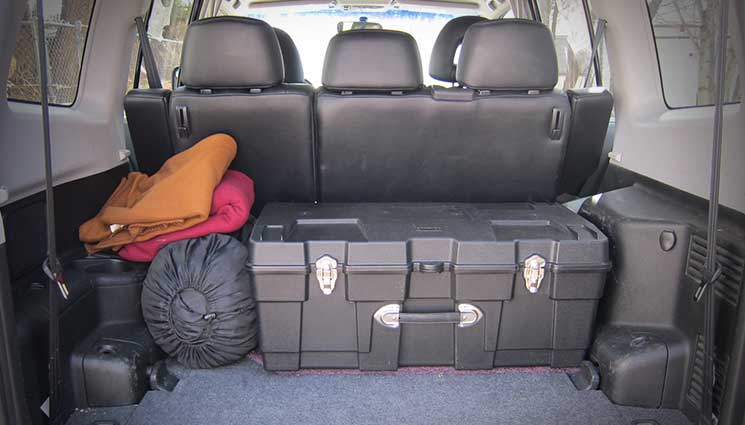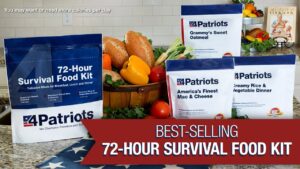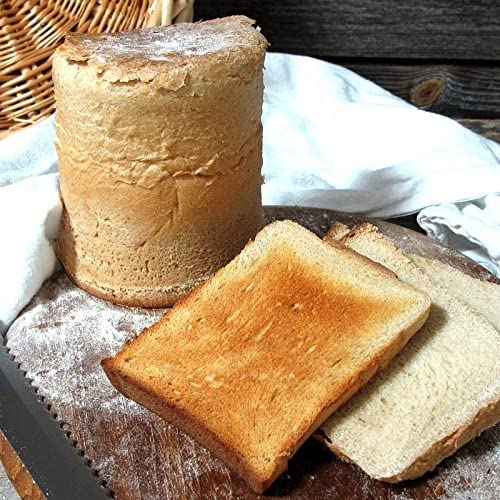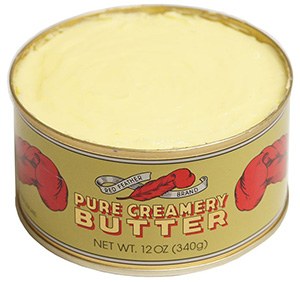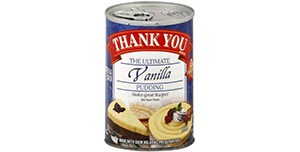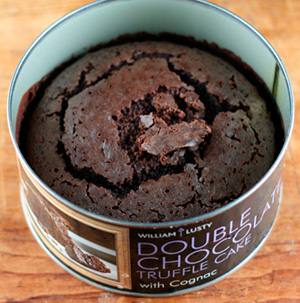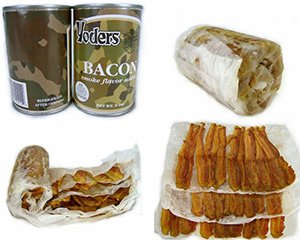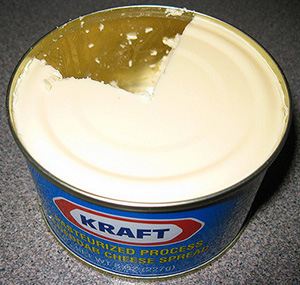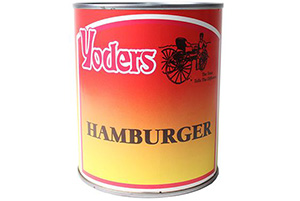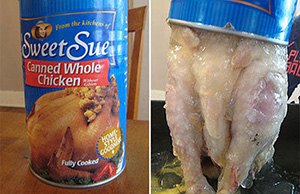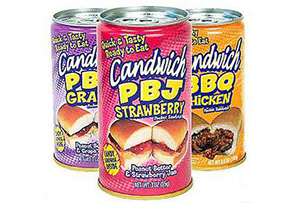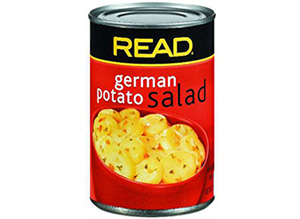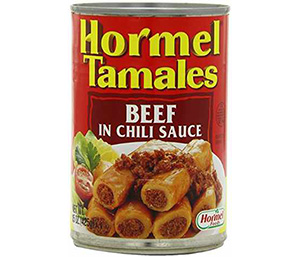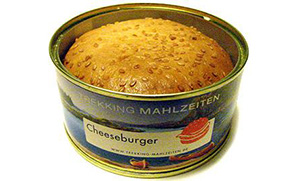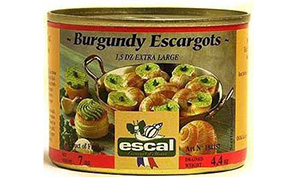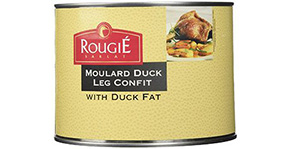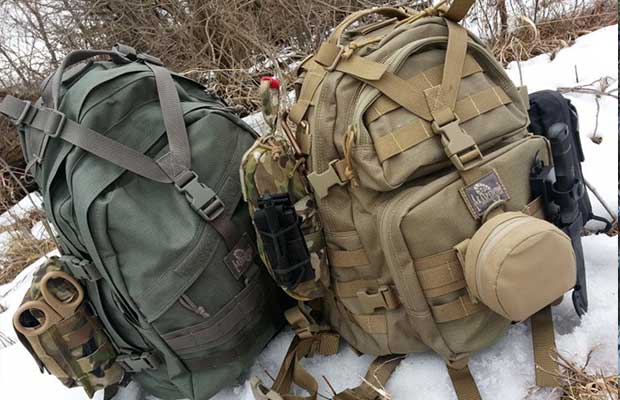12 Foods To Keep In Your Car At All Times
Being prepared means being prepared all the time; at least in my book it does. That can be a bit challenging at times, especially since we don’t really know what life is going to throw our way. That’s why I always carry a complete survival kit as part of my EDC, along with emergency equipment in my car. This includes a variety of food items so that I always have something to eat with me.
Granted, there are few places where you can drive in this great land of ours, where you aren’t going to find food to eat. Even so, I’ve been in a few. I’ve also been stranded in my car a number of times, whether because of mechanical failure or simply being stuck in traffic. At those times, it’s nice to have something to eat, especially something for the kids to eat. They just don’t understand phrases like, “There isn’t a McDonald’s here in the middle of nowhere.”
Keeping food in your car can also help out with a number of other emergency and semi-emergency situations, such as low blood sugar, heat exhaustion, and low energy. So it really makes sense to keep food in the car, even if you’re not thinking of bugging out or getting stranded. Now the only question is, what to keep? Here are the types of things I find useful to keep in mind.
Water
I always start out by putting a couple of gallons of water in the car. I know some people prefer to use bottles, but I find that I can carry more water in less space if I use gallons. If I need to drink that water, I can easily pour it into water bottles; but if I need to use it for the car, gallons are more convenient.
The water bottle in this picture is aluminum. I always use metal water bottles, because they can be put in the fire. So, I can use this water bottle to purify water, heat up water for coffee, and heat up water for soup. That’s a whole lot better than using a plastic water bottle and needing to have something extra for heating up water.
Gatorade Powder
I live in a hot part of the country, so it’s not unusual to overheat and become dehydrated from sweating too much. Many people deal with that here by drinking copious amounts of Gatorade. Carrying liquid Gatorade in bottles is one option, but it takes up space. Since I’m carrying water anyway, I tend to carry the powdered Gatorade, rather than the bottles.
Of course, the container of powdered Gatorade is pretty large too; about the size of a number 10 can. So for the car, I just dump some of it into a label. This jar held pickles at one time until I cleaned it out and repurposed it for my Gatorade. A plastic container would work too.
You might want some instant coffee, as well as your Gatorade, especially if you do a lot of driving at night. With the metal water bottle and a way to start fires, you’ll be all set to make yourself a cup of coffee, even if you are in the middle of nowhere.
Jerky
My favorite snack food is jerky. Nutritious, low calorie and it is meat; what more could you ask for? The American Indians made jerky as survival food and our early ancestors learned that from them. While there are other places in the world that make something similar, our jerky tradition goes back to those early Indians.
Jerky also provides you with something that you can make a meal out of. Mix it with Ramen noodles and come dried veggies and you’ve got a fairly decent soup; something that can keep you going and warm you up on a cold night.
Just remember that you will need to replace your jerky periodically if you don’t eat it. Heat will draw the oils out of it, drying it even further.
Ramen & Dried Vegetables
Good old Ramen is the college staple. I think every college student goes through a time when they live off of it. It’s a great source of carbohydrates to give you energy to keep you going. Mix it with some cut-up jerky and some dehydrated vegetables and you can have a much heartier soup.
This kind of Ramen comes with dried vegetables already mixed in. I usually dry my own, but I’m out of them until harvest time, so I bought the kind that comes with veggies. While a bit more expensive, it really doesn’t cost all that much. Besides, it comes with a cup to mix it in.
Dry Fruit
Speaking of carbohydrates, fruit is another excellent source for them. If you have someone with low blood sugar, giving them fruit is much safer than giving them a candy bar. The natural fructose sugar is much easier for the body to digest and won’t shock their system like candy will.
Dried fruit also provides you with something that’s easy to take along, if you have to leave your car for any reason; whether due to an emergency, taking a hike, or for work. A bag of dried fruit in your pocket can keep away hunger pains for the whole afternoon.
Canned Fruit
Canned fruit, like dried fruit, is a great source of carbohydrates and sugar. Some people prefer it. I wouldn’t want to carry this around in a backpack, due to the extra weight; but last I checked, that much weight isn’t going to bother anyone’s car.
These mandarin oranges and applesauce are “canned” in plastic cups, with foil lids. That works well for short-term canning; but not for long-term (more than a year). The plastic might release some chemicals into the fruit during hot times, so you want to be careful about that. Even so, canned fruit can be much more refreshing than dried when you need something to eat.
Granola Bars
I’m almost as big a fan of granola bars for emergency food as I am of jerky. It’s worth spending the money to buy the better brands, even though they are considerably more expensive. But the amount of nutrition you get from those better brands makes them worth the money.
Granola bars are great, in that they are an ideal pick-me-up sort of snack, packing a lot of carbohydrates into a small amount of food. Watch out for the ones with chocolate or yogurt, as those ingredients can melt, making a mess for you to deal with.
Nuts & Sunflower Seeds
Nuts are a good source of both fats and protein. Of all the nutrients we eat, protein is one of the most important, as the body can’t really synthesize it well, without having consumed proteins to break down into amino acids. Fats digest slower than carbohydrates, providing you with long-term energy to burn. Eating a combination of fats and carbohydrates together will keep you going for hours.
I always keep sunflower seeds on hand, as well. Like nuts, they provide you with protein and fats, but they also do something else; they help keep you awake. If you’re driving long distances, especially at night, eating sunflower seeds while you are driving will keep you active enough that you can probably keep driving all the way through the night.
Hard Candies & Gum
These might be a bit surprising, but I have a good reason for keeping them in my car. First of all, hard candies are great for that quick burst of sugar, when you need some energy. They’re a whole lot safer to eat than energy drinks too. But they also work to help you if you have a sore throat and don’t have any throat lozenges around. Sometimes, I just carry the throat lozenges and use them as hard candy.
Peppermint is also useful for settling an upset stomach or relieving pain. Peppermint essential oil is one of the best ways to relieve headaches there is. So if you’re in pain, have a headache, or have indigestion, mints are nice to have.
The gum isn’t as much for use as candy, as it is for relieving the pressure in your ears when changing altitude quickly. If you’ve spent any time traveling by air or in the mountains, you’re familiar with the need to pop your ears every once in a while. Chewing gum helps with that. It can also help to keep you awake while driving at night, just like the sunflower seeds.
Breakfast Cereal
This is for the kiddies. If you have small children, breakfast cereals, especially sweet breakfast cereals are one of the easiest ways of quieting them down, when they are hungry. Not only do they like the taste, but they like eating the cereal out of these cool little containers. Yeah, you can put it in baggies too; but for the price, these are worth it.
Doritos
Many people have touted Doritos as a fire starter. Actually, what they are is a good tinder for a fire.
The combination of the dried corn and the oils they are cooked in, make the chips burn well. You can even ignite them with a spark, let alone using a flame to get them going.
If you don’t need them for a fire, I suppose you can always eat them. Doritos, like any other chips, are a good source of carbohydrates.
Being made of corn, rather than potato, they probably digest a little slower; so they’ll help you feel full longer than if you were just eating potato chips.
Spices
This is another one that you might think is a bit strange, but there is a good reason for it.
Whether you’re in an actual survival situation or you’re just stranded somewhere, there’s a good chance that you’ll end up eating things that you might otherwise not want to eat.
But when you’re hungry, you go for what’s available, right?
But that doesn’t mean that you have to choke it down if you don’t like it. Rather, bring some spices with you, so that you can make it more appealing. It’s amazing what you can do with just a few spices, especially if they are stronger flavors that you like.
Both of the container styles shown below were bought on eBay.
The ones with the red stoppers are small test tubes and the others are just miniature containers. I wrote on them with a Sharpie marker and I’d recommend covering that with tape, so that the marking doesn’t wipe off. Put the closed containers in a small zipper bag, so that nothing can rub against the lids and open them.
Other self-sufficiency and preparedness solutions recommended for you:
The vital self-sufficiency lessons our great grand-fathers left us
Knowledge to survive any medical crisis situation
Liberal’s hidden agenda: more than just your guns
Build yourself the only unlimited water source you’ll ever need
4 Important Forgotten Skills used by our Ancestors that can help you in any crisis
Secure your privacy in just 10 simple steps
Being prepared means being prepared all the time; at least in my book it does. That can be a bit challenging at times, especially since we don’t really know what

